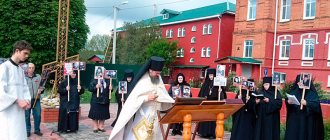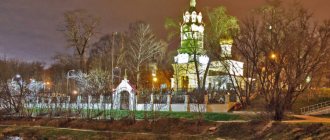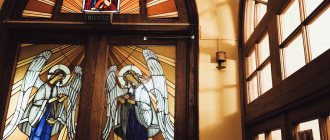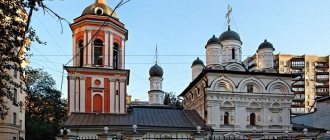Mir
Russia St. Petersburg Temple of Blessed Xenia of Petersburg (St. Petersburg) Map is loading…
{"format":"leaflet","minzoom":false,"maxzoom":false,"limit":50,"offset":0,"link":"all","sort":[""], "order":[],"headers":"show","mainlabel":"","intro":"","outro":"","searchlabel":"\u2026 \u0441\u043b\u0435\ u0434\u0443\u044e\u0449\u0438\u0435 \u0440\u0435\u0437\u0443\u043b\u044c\u0442\u0430\u0442\u044b","default":"","import-annotation":false,"width ":"auto","height":"350px","centre":{"text":"","title":"""link":"""lat":59.9633119399999969800774124450981616973876953125,"lon": 30.299328890000001734961188049055635929107666015625,"icon":""},"title":"","label":"","icon":"","lines":[],"polygons":[],"circles":[ ],"rectangles":[],"copycoords":false,"static":false,"zoom":8,"defzoom":14,"layers":["OpenStreetMap"],"image layers":[] ,"overlays":[],"resizable":false,"fullscreen":true,"scrollwheelzoom":true,"cluster":false,"clustermaxzoom":9,"clusterzoomonclick":true,"clustermaxradius":80, "clusterspiderfy":true,"geojson":"","clicktarget":"","showtitle":true,"hidenamespace":false,"template":"","userparam":"","activeicon": "","pagelabel":false,"ajaxcoordproperty":"","ajaxquery":"","locations":[{"text":"\u003Cb\u003E\u003Ca href=\"/palomnik/%D0% A5%D1%80%D0%B0%D0%BC_%D0%B1%D0%BB%D0%B0%D0%B6%D0%B5%D0%BD%D0%BD%D0%BE%D0%B9_% D0%9A%D1%81%D0%B5%D0%BD%D0%B8%D0%B8_%D0%9F%D0%B5%D1%82%D0%B5%D1%80%D0%B1%D1% 83%D1%80%D0%B3%D1%81%D0%BA%D0%BE%D0%B9_(%D0%A1%D0%B0%D0%BD%D0%BA%D1%82-%D0% 9F%D0%B5%D1%82%D0%B5%D1%80%D0%B1%D1%83%D1%80%D0%B3)\» title=\»\u0425\u0440\u0430\u043c \u0431 \u043b\u0430\u0436\u0435\u043d\u043d\u043e\u0439 \u041a\u0441\u0435\u043d\u0438\u0438 \u041f\u0435\u0442\u0435\u0440\u0431\ u0443\u0440\u0433\u0441\u043a \u043e\u0439 (\u0421\u0430\u043d\u043a\u0442-\u041f\u0435\u0442\u0435\u0440\u0431\u0443\u0440\u0433)\»\u003E\u0425\u0440\u04 30\u043c\u0431\ u043b\u0430\u0436\u0435\u043d\u043d\u043e\u0439 \u041a\u0441\u0435\u043d\u0438\u0438 \u041f\u0435\u0442\u0435\u0440\u0431\u0 443\u0440\u0433\u0441\u043a\ u043e\u0439 (\u0421\u0430\u043d\u043a\u0442-\u041f\u0435\u0442\u0435\u0440\u0431\u0443\u0440\u0433)\u003C/a\u003E\u003C/b\u00 3E\u003Chr /\ u003E\u003Ca href=\»/palomnik/%D0%A1%D0%B2%D0%BE%D0%B9%D1%81%D1%82%D0%B2%D0%BE:%D0%90%D0% BD%D0%BD%D0%BE%D1%82%D0%B0%D1%86%D0%B8%D1%8F\" title=\"\u0421\u0432\u043e\u0439\u0441\u0442\u0432\ u043e:\u0410\u043d\u043d\u043e\u0442\u0430\u0446\u0438\u044f\u003E\u0410\u043d\u043d\u043e\u0442\u0430\u0446\u0438\u044f\u 003C/a\u003E: " '\u0426\u0435\u0301\u0440\u043a\u043e\u0432\u044c \u0432\u043e \u0438\u0301\u043c\u044f \u0421\u0432\u044f\u0442\u043e\u0301 \u0439 \u0411\u043b\u0430\ u0436\u0435\u0301\u043d\u043d\u043e\u0439 \u041a\u0441\u0435\u0301\u043d\u0438\u0438 \u041f\u0435\u0442\u0435\u0440\u0431\u0 443\u0301\u0440\u0433\u0441\ u043a\u043e\u0439"' \u2014 \u043f\u0440\u0430\u0432\u043e\u0441\u043b\u0430\u0432\u043d\u044b\u0439 \u0445\u0440\u0430\u043c \u043d\u0430 \u041b\u0430\ u0445\u0442\u0438\u043d\u0441\u043a\u043e\u0439 \u0443\u043b\u0438\u0446\u0435 \u0432 \u0421\u0430\u043d\u043a\u0442-\u041f\ u0435\u0442\u0435\u0440\u0431 \u0443\u0440\u0433\u0435. \u0425\u0440\u0430\u043c \u043f\u043e\u0441\u0442\u0440\u043e\u0435\u043d \u043d\u0430 \u043c\u0435\u0441\u0442\u0435, \u04 33\u0434\u0435\u0441\u0442\ u043e\u044f\u043b \u0434\u043e\u043c, \u0432 \u043a\u043e\u0442\u043e\u0440\u043e\u043c \u0436\u0438\u043b\u0430 \u0431\u043 b\u0430\u0436\u0435\u043d\u043d \u0430\u044f \u041a\u0441\u0435\u043d\u0438\u044f \u041f\u0435\u0442\u0435\u0440\u0431\u0443\u0440\u0433\u0441\u043a\u0430\ u044f\u0441\u043e\u0441\u0432 \u043e\u0438\u043c \u043c\u0443\u0436\u0435\u043c.","title":"\u0425\u0440\u0430\u043c \u0431\u043b\u0430\u0436\u0435\u043d\u043d \u043e\u0439 \u041a\u0441\u0435\u043d\u0438\u0438 \u041f\u0435\u0442\u0435\u0440\u0431\u0443\u0440\u0433\u0441\u043a\u043e\u0439 (\u0421\ u0430\u043d\u043a\u0442- \u041f\u0435\u0442\u0435\u0440\u0431\u0443\u0440\u0433)","link":"","lat":59.9633119399999969800774124450981616973876953125,"lon":30. 299328890000001734961188049055635929107666015625,"icon":""}]" imageLayers":[]}
59.96344; 30.299079
Russia, St. Petersburg, Lakhtinskaya street, 17
Saint Petersburg
Russia
Telephone:
+7 (812) 337-27-75
Email:
Church in the name of St. Blessed Xenia of St. Petersburg
- Orthodox church on Lakhtinskaya Street in St. Petersburg. The temple was built on the site where the house stood in which Blessed Ksenia of Petersburg lived with her husband.
History[edit]
They decided to build a temple on Lakhtinskaya Street in the early 2000s. The initiator was the society of disabled people of the Petrograd region. With the blessing of the ruling bishop, the parish was headed by the full-time cleric of St. Andrew's Cathedral on Vasilyevsky Island, Archpriest Konstantin Gultyaev. The construction of the temple from its foundation to its consecration was carried out directly through the efforts of Father Konstantin. The parish was supported by caring people who were ready to donate their money to a charitable cause. Special thanks must be expressed to the Chairman of the Legislative Assembly of St. Petersburg, Vyacheslav Serafimovich Makarov, who shows great attention to the life of the temple, and the founder of the group and foundation “Creating the World,” philanthropist Vyacheslav Adamovich Zarenkov. They showed themselves to be real Russian ascetics. Without their efforts, the church might have turned into a long-term construction project.
According to the project of the architectural studio of Gennady Fomichev, the two-story Church of St. Blessed Xenia of St. Petersburg is the only one in the city.
It was supposed to be built by 2010. However, for various reasons, work stopped.
Construction proceeded in several stages: the zero cycle began in 2009, then stopped, then the construction of the frame. Finishing work began in 2016. We worked collectively, and therefore there is no single author of the interior project. Artists, art historians, icon painters, woodcarvers, architects, mosaic artists, the general contractor headed by Alexander Machkhelyan, the curator of the selection of interior solutions Ekaterina Kuznetsova - all these people probably appeared thanks to the patroness of the temple.
The painting was done by the studio of the artist Alexander Prostev, the mosaics and stained glass windows were the work of the Taurus workshop, the team of Alexander Sas worked on the iconostasis, the design of the refectory was led by Roman Andryushkin, the chandelier was the brainchild of the Restorer workshop.
PMRO "Parish of the Church of St. Blessed Xenia" was registered in 2002. Its founders include 14 people, including the current honorary rector of the church, Archpriest Konstantin Gultyaev, and the head of the Foundation of St. Blessed Xenia of Petersburg, Valery Abramkin.
The initial design of the church was developed by the architect of JSC LenNIIproekt Boris Bogdanovich. He proposed a structure of a square volume with rectangular windows, which was uncharacteristic for the architecture of the Petrograd side.
“It is in this church and in this place that such an icon of St. Xenia of St. Petersburg could appear. The iconography is unique: the saint’s clothes highlight elements of the man’s uniform that her husband once wore. This is exactly how the saint walked along this very street.” (Dmitry Mironenko, icon painter.)
How to get to the Church of Xenia of Petersburg
To get to the monastery, you can take the metro to the Vasilyevskaya station and go out onto the street, where you turn onto the eighth line, and then follow in the direction of increasing the numbering of houses. Address: St. Petersburg, st. Kamskaya, 24. Schedule of services in the Church of Xenia of St. Petersburg: every day from 10:00 to 19:00 with a break of 5-10 minutes, prayers are served to Blessed Xenia for health and repose.
Every believer in the church can bow before the icon of St. Blessed Xenia of St. Petersburg. Schedule of the Church of Xenia of Petersburg at the Smolensk cemetery:
- on weekdays, hymns at 8:00, evening service at 17:00;
- Sundays and twelve holidays hymns at 7:00 and 9:30; evening service 17:00.
The best article for you, go to: Temple of Paraskeva Friday in Butovo, schedule of services
The Lord is always with you!
Helping the suffering for two centuries...
Presumably, at the age of 71, Ksenia passed away into eternity, and a chapel was erected over her grave. This happened in 1800-1802. The righteous woman herself determined the place of her burial. People came here in hundreds, and everyone tried to take with them a handful of earth from the burial mound: it was noticed that it brought healing. The earth was repeatedly filled up again, and people dismantled it again. They installed the tombstone - again they dismantled it and carried it away piece by piece. Then, using donations collected by the people, a wooden chapel was built.
Already in 1901, construction began on a stone chapel in the Russian style, which was completed a year later. At the same time, the chapel was consecrated, and a marble iconostasis was placed at the head of the tomb. A lamp was burning in front of the mosaic image of the Crucifixion, and icons hung on the walls. The arches on the façade were decorated with the faces of Christ and Blessed Xenia, and the windows were decorated with stained glass icons.
The chapel was closed in 1940, but people continued to turn to their intercessor. During wartime, the building was desecrated: a warehouse was set up in it, icons were burned, utensils and church fragments were melted down, and the marble tombstone was broken. Many valuable things were missing: silver icons, a stained glass icon with the face of Christ, an embroidered image of Xenia.
In 1946, believers obtained permission to open the chapel - everything was restored again, and memorial services began. For days on end, sufferers came to Saint Xenia in an inexhaustible stream. Years passed on such pilgrimages - and then in 1960 the chapel was closed again, and a sculpture workshop was set up in the building. And although the chapel was boarded up and surrounded by a fence, this did not stop believers from all over the country from coming to the intercessor with their troubles and hopes.
Almost 30 years later, St. Petersburg residents raised the shrine from the ruins: in the evenings, many people came to restore the chapel. They cleaned the walls of soot, removed mountains of garbage and renovated the floor. So the whole world carried out restoration work, and the chapel was consecrated by Metropolitan Alexy of Leningrad and Novgorod. And in 1988, during the celebration of the 1000th anniversary of the Baptism of Rus', the official canonization of Blessed Xenia took place and she was canonized as a saint of the Russian Orthodox Church. The patronal feast day of Blessed Xenia of St. Petersburg is celebrated on February 6.
The gilded onion dome above the chapel was restored in 2003, at which time the stonework was painted light green. The façade has arched, pointed windows with struts. The windows themselves are decorated with stained glass, as in the original construction. And the front and back sides of the facade, as many years ago, are decorated with images of Christ and St. Xenia in the form of a mosaic.
Church of St. Blessed Xenia of Petersburg
The religious community “Parish of the Church of St. Blessed Xenia of Petersburg” was registered in 2002. In the same year, the community turned to the KGA with a request to provide a place for the construction of a center - with a temple, a school, a museum - on the corner of Lakhtinskaya Street. and Bolshoi Ave. PS.
The choice of place was due to the fact that approximately in this place there was a house where Ksenia Grigorievna Petrova lived with her husband Andrei Petrovich, who, after the sudden death of her husband, accepted the feat of foolishness.
In the article “On the question of the location of the house of St. bliss Ksenia of Petersburg”, published on the website petragrad.spb.ru, Vladimir Sinkevich considers the question: where was Colonel Petrov’s house really located. The article says that in the “Atlas of 13 parts of St. Petersburg” by N. Tsylov (St. Petersburg 1849, Rep., M., 2003, 862 pages), on the map of 309 of the St. Petersburg part, this street is called “Petrova Street 3 blocks.” Land plots No. 847 and 846 were already owned by the merchant Sofya Ivanovna Chemesova. Neighbors on modern Lakhtinskaya Street. were: uch. 848 - Bobrova, and along modern Gatchinskaya Street. studies 844, 845 - Sophonova. Opposite plot 847 across modern Lakhtinskaya Street, on the modern odd side of the street, plots 885 and 886 were owned by Tikhonova. That is, the site where the house of Blessed Xenia once stood was the second from the corner of modern Lakhtinskaya Street. and Bolshoy Prospekt, and was located behind the school. 846. on modern Lakhtinskaya street. towards Maly Prospekt (approximately modern Lakhtinskaya 2-4, although the modern numbering does not correspond to the historical location of the house). Based on the results of studying the map, V. Sinkevich concludes that in the place where the house of St. Ksenia, a modern shopping center has now been built. The order to build a shopping center was issued in 2004.
On April 10, 2007, a decision was made to build the Church of St. Blessed Xenia of Petersburg on the site between houses 15-19 on Lakhtinskaya Street. Metropolitan Vladimir of St. Petersburg and Ladoga personally petitioned Governor V.I. Matvienko to allocate the site.
In 2005, a project for the construction of the Chapel of St. Xenia the Blessed near the house at 19 Lakhtinskaya Street appeared. The project was drawn up by LenNIIproekt architect Boris Bogdanovich, but for various reasons the project was not accepted by the customer.
As often happens recently with the construction of new churches in the historical part of the city, residents of the surrounding houses had ambivalent reactions to the decision to build a church on this site: some did not want to wake up from the ringing of bells, others were afraid that the church building would reduce the lighting of existing houses . When a new project appeared, created by AM G.P. Fomichev, residents began to complain that instead of the originally envisaged 30 sq.m., the temple would occupy 200 sq.m., Novaya Gazeta wrote about this on July 7, 2008 in the article “Temple high voltage." After the demolition of the stone barn adjacent to house No. 19, complaints began to be received about the appearance of cracks in the house. As a result of complaints from residents, the construction of the temple was repeatedly suspended.
Currently (2014) the temple has been roofed, but its construction is unlikely to be completed this year.
The Prophet's Gift Hidden Behind Madness
Many books have been written about the miracles of Blessed Xenia. The newspaper of the parish of the Church of the Smolensk Icon of the Mother of God regularly publishes letters with “fresh” evidence of her miraculous works.
Even during the saint’s life, people began to notice: sometimes Ksenia’s incoherent speech conceals important details, and behind the madness lies God’s prophetic gift. So, she foresaw the sudden death of Empress Elizabeth Petrovna and the murder of Tsarevich John. Once she predicted a meeting with her future husband to one of her friends, and to another - the birth of a son. Ksenia healed souls with just her presence, and the people of St. Petersburg loved this beggar woman very much. They affectionately called her Ksenyushka, and in addition, “ambulance”, because with her assistance people’s wishes came true quite quickly. The blessed one especially helped with everyday problems, in finding spouses, and in arranging family life.
Where did the Blessed One live?
In three years, the St. Petersburg Metropolis may grow with a new church. They are going to build it on the Petrograd side. The exact address is Lakhtinskaya Street, 17. According to LenNIIproekt architect Boris Bogdanovich (he is the author of the project), finding a spot for the church in the name of Blessed Xenia of Petersburg in the historical center was not so easy. Construction hasn't started yet, but some amazing things have already happened...
| This is how the designers imagine the future church |
First, we need to recall the extraordinary personality of St. Petersburg resident Ksenia Grigorievna Petrova, who lived during the time of Empress Elizabeth Petrovna.
Her husband Andrei Fedorovich owned a house on one of the streets (later it became known as Petrovskaya) on the St. Petersburg side. He was a military man, with the rank of colonel, and sang at court in the church choir. But suddenly trouble came: for no apparent reason, the husband died suddenly, without having time to confess and take communion. And then, as the legend says, in order to save the soul of her beloved, Ksenia sacrificed not only earthly riches (she distributed all her property to the poor), but also her own mind. So, calling herself Andrei Fedorovich, she began to ask people to consider Ksenia Grigorievna dead. Andrei Petrov, according to her passionate desire, had to live. The widow walked around the city in her husband’s uniform and made strange speeches. But soon the townspeople began to notice that the blessed one was predicting fate. On the eve of December 25, 1761, the day of the death of Empress Elizabeth, she allegedly walked the streets and broadcast: “Bake pancakes! Soon all of Russia will be baking pancakes!” The prediction came true: after the funeral, people remembered the queen with pancakes. They also wrote about such a case. Once Ksenia approached an unfamiliar woman, gave her a copper nickel with the image of St. George the Victorious and said: “Take the nickel, there is a king on a horse. It will go out." "What could this mean?" — the woman thought and headed towards the house. Turning onto her street, she saw flames escaping from the windows and a crowd standing nearby. But as soon as the unfortunate woman ran up to her burning building with the coin, the fire went out.
They say that Ksenia appeared to St. Petersburg residents in the guise of an old woman even after her death in the 72nd year and advised how to get out of this or that difficult situation... Maybe that’s why so many believers visit the chapel at the Smolensk cemetery, where Ksenia the Blessed is buried.
After, at the beginning of our century, the Petrograd branch of the All-Russian Society of Disabled People decided to build a separate church in the name of Xenia of St. Petersburg and turned to the Russian Orthodox Church for help, something amazing began to happen. In the church parish created by the society, they tend to attribute this to the influence of Ksenia herself.
When construction was first planned, Metropolitan Vladimir of St. Petersburg and Ladoga indicated: the church should appear on the Petrograd side. The exact location has not been determined. We chose a suitable lacuna on the corner of Maly Prospekt and Lakhtinskaya Street. There was a small park here. However, it soon became clear that they were going to build a shopping center there. I had to adjust my plans and look for a new place. It was found quite quickly on the same Lakhtinskaya street. Between houses 15 and 19 there was a one-story abandoned building, and nearby - at that time - an undeveloped area. It was here that they decided to build a church.
Any project requires historical information. Bogdanovich and colleagues turned to KGIOP for this purpose, and from there came sensational news: without realizing it, the authors of the project chose the territory where the Petrovs’ house stood several decades ago. The house in which Ksenia Grigorievna lived (it turned out that Lakhtinskaya Street was once called Petrovskaya!). This house was found by KGIOP employees on old diagrams and topographic engravings.
“The place where we located the temple is small - only 16 by 18 meters, and strictly oriented along the street,” Boris Petrovich Bogdanovich explains about the project. “Then the question arose with the altar: it turned out not in the east, but in the southeast. The idea occurred to us that in Rus' there were no compasses and the east was found by sunrise. On February 6, the day of Xenia’s canonization, it rises in the southeast. So it turns out that the altar part will be located according to Orthodox canons. But then the main entrance, due to the nearby house, can only be arranged from the southwest... And in the southwest direction from this place there is the Smolensk cemetery!”
These are the miracles.
Boris Bogdanovich is one of the few architects who, along with residential buildings, designs cathedrals and churches. Among his projects are the Church of the Sovereign Icon of the Mother of God, which is being built at the Municipal Internal Affairs Hospital on Kultury Avenue, the Ascension Church in the village of Radofinnikovo, Tosnensky District, and a temple in the Kazakh city of Stepnogorsk. The new facility is the first in a historical building. A group of institute architects carried out all the drawings of this building free of charge. “It’s part of our culture to help ourselves,” says the architect.
Today, churches in Russia are built predominantly of brick-monolithic type: a monolithic frame and non-permanent brick walls. A striking example is the Cathedral of Christ the Savior in Moscow. The Church of Xenia the Blessed is no exception. If you use modern designs, then the building should be modern. Only the domes and the altar will be traditional.
According to the rector of the local parish, Priest Konstantin (Gultyaev), the church will have five domes, of which the central one is the main one. But there will be no bells. They “did not pass the noise level” (these requirements are even applied to temples). Lakhtinskaya Street, says the priest, is not very wide. And the saint’s veneration is considerable. On the other hand, the church area is designed for only 200 parishioners. Therefore, in the future, according to him, it would be good to turn Lakhtinskaya into a pedestrian zone. Like the one on Andreevsky Boulevard, between the 6th and 7th lines of Vasilyevsky Island, where St. Andrew’s Cathedral stands. By the way, Father Konstantin now conducts services there, which is why he wants to transfer best practices to the neighboring area of the city.
Of course, the customer, the society for the disabled, also made some recommendations regarding the construction of the temple. For example: you cannot build it on a high foundation, otherwise disabled people will not be able to drive inside in wheelchairs...
All necessary approvals for construction have been received. It was supposed to start last summer, but the area is not even fenced yet. They are looking for a construction company that could build the facility for less money. According to standards, construction will take three years. But taking into account the fact that it will be carried out exclusively on donations, the time frame could stretch for ten years. This assumption was made by Boris Bogdanovich. The cost is estimated at approximately 60 million rubles. This kind of money is not collected quickly. That is why the parish turns to believers with a request to donate to the first separate church in the name of Xenia of St. Petersburg. All bank details are available on a specially created website - xeniahram.spb.ru.
https://www.spbvedomosti.ru/ [email protected] _Articles









